In each teaching Buddha invites you to experience the Buddha-nature that exists in everything that exists from the moment you can see the attachments and illusions of unidentified materiality. There are many practices that help with the trajectory proposed by him, which does not necessarily consist of sitting and meditating, since just like yoga , meditation is a lifestyle and can take on new aspects to make you reach your potential. your being.
Therefore, we take hold of interior decoration as a transformation tool and turn our gaze to the concept of the Four Stages of Enlightenment described in the Sutta Pitaka , from the canonical collection of sacred books ( Pali Canon ); especially practiced in Theravada Buddhism, one of the oldest and most traditional branches.
The Stages of Enlightenment are divided into 4 pairs that unite Path and Fruition through enriching experiences of understanding and selflessness for the cessation of suffering. The stages are progressive and called sotapanna , sakadagami , anagami and arhat - the level at which Nirvana is reached.
The challenge is to include this knowledge and ascetic practices in everyday life, experiencing it step by step with the help of the Zen environment .
Sotapanna : Path and fruition of stream entry
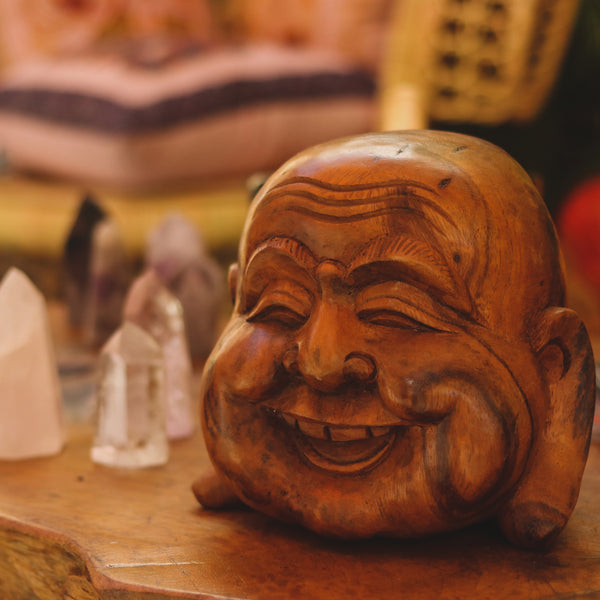
The Fat Buddha image creates a flow of positive energy. Guide him!
The first stage, Sotapanna , which means "who enters the river" in Sanskrit, is formed by both the Path to Stream Entry and the Fruition of Stream Entry , i.e., its knowledge and enjoyment. This path begins with those who open their eyes to the teachings of Buddha ( Dharma) , who abandon attachments and have the understanding that there is no individual self.
When taking the image of Buddha to the interior of the house or the work environment, intuitively, one becomes aware of the spiritual path or energy that one yearns to appreciate from one's choice. At that moment you create a flow of energy that goes against the Path and Flow of Sotapanna . And if joy and bliss are motivations driven by this initial stage, nothing more coherent than highlighting theSmiling Buddha in the decoration to keep you dedicated to the deepening of the Dharma .
Sakadagami : Path and Fruition of Return
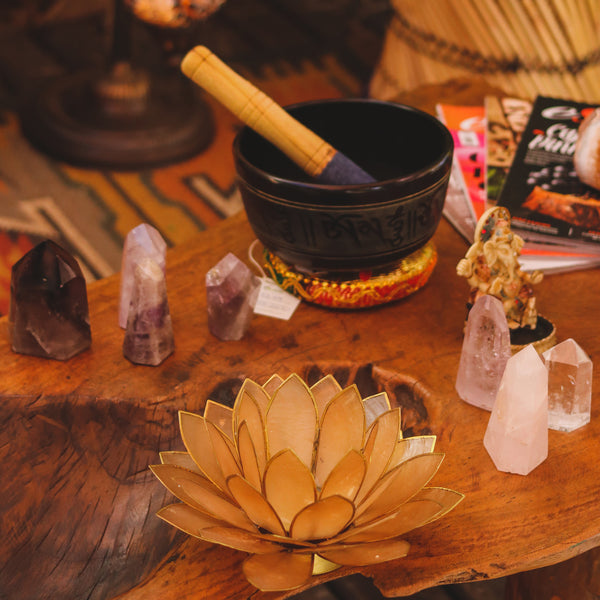
Use Zen arts to aid the practice of concentration meditation.
In the second stage of gradual progress there is the deep understanding of “not-self” and the reduction of attachments and aversions, as well as the suffering generated by them. Sakadagami is one who returns once to the realm of the senses, freeing himself and alleviating some of the 10 Fetters or Obstacles to Enlightenment : illusion of an individual “I” ( sakkaya-ditthi ), skeptical doubt ( vicikiccha ), attachment to rituals ( silabbata-paramasa ), sensual desire ( kama-raga ) and ill will ( vyapada ).
The path consists of practicing the Noble Eightfold Path (which we mentioned here ), and concentration meditation ( samatha bhavana ) to clear up resistance to attachments and keep the mind peaceful, in balance with body and spirit. For meditative exercise, one of the 40 Buddhist Meditation Objects ( kammatthana ) like water and fire is used. In this context, it is easy to understand the importance of the decorative fountain and candlelight in the process of self-transformation.
If you want to make this experience even more enriching, use the sounds of the Tibetan Bowl as instruments of concentration.
Anagami : Path and fruition of non-return
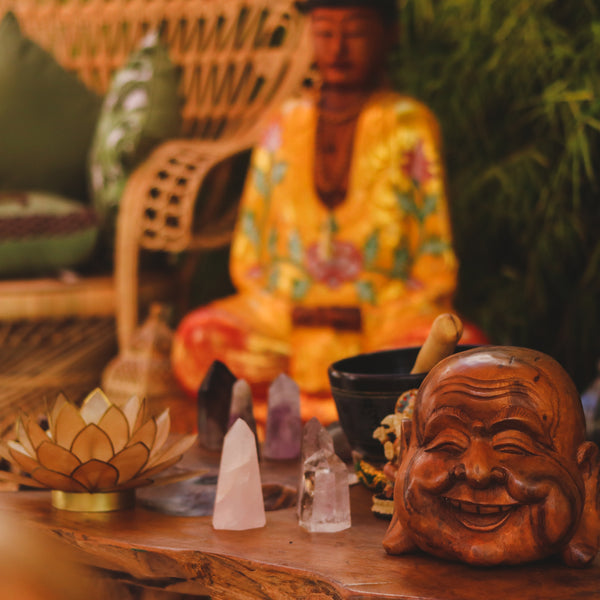
Peaceful environments translate the serene essence of Anagami.
The third stage of the path to Nirvana and its fruition is the Anagami which in Sanskrit means "the one who does not come". Non-return or non-return represents the noble being ( aryapudgala ) who, motivated with love, compassion and the intention to be a Boddhichitta , transcends evolutionary obstacles like hatred, ignorance, greed and jealousy that arise from the attachments and illusions of matter. On this path, Nirvana is accessed after rebirth in one of the special planes or worlds ( dhātus ) of Buddhist cosmology .
And as it is not an experience gained in earthly life, the peaceful essence of Anagami emerges as inspiration for Buddhist decoration . When peaceful environments are created, starting from decorative elements endowed with purpose - such as crystals, Buddha sculptures and lotus flower lamps -, the Path to Non-Return emerges as a leader, activating benevolence daily to bring you in addition.
Arhat : Path and Fruition of the Arahat Stage
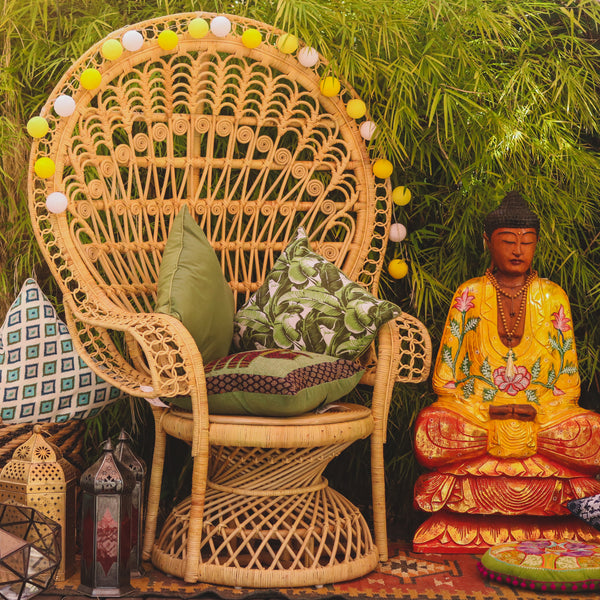
Buddhist decoration is a daily inspiration for those seeking spiritual elevation.
Arhat or Arahat is the highest stage of Nirvana , and symbolizes liberation from Samsara , an incessant cycle of rebirth and death that causes suffering in sentient beings. The Arahat stage is entered by those who have walked the Middle Way as experienced and taught by the Buddha and have stripped themselves of all division of essence and external control.
Like Anagami , the Arhat 's elevated spirituality is not experienced in the "human world", however, only in this one can awaken and perform the Bodhisattva vow, dedicating himself to self-transformation and benefactor to the greatest number of beings possible. Therefore, the Path to the Arahat Stage is an invitation to truly appreciate life, without vanity and without worrying about material or spiritual ascension. Arhat is no longer subject to ignorance, desires and aversions.
And, assuming that toys are important learning tools for children, Buddhist art proves to be extremely efficient as a transformation tool. In this context, Zen decoration assumes the role of a guide, as it endows the concepts of Buddhism with beauty and converts them into daily inspirations to promote well-being and keep you in tune with the wisdom of the divine nature.
Create environments that comfort your being with decorative objects from our online store and internalize your good vibes!
Namaste!
Milene Sousa - Art & Tune


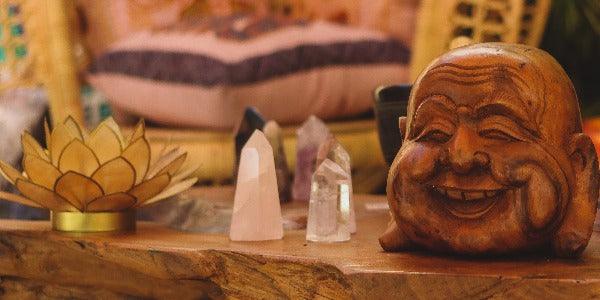












1 comment
Visa
[url=http://www.gt5g1s85693e3019p8z4p5jqfbzi78jas.org/]usdhnwltnvc[/url]
sdhnwltnvc http://www.gt5g1s85693e3019p8z4p5jqfbzi78jas.org/
asdhnwltnvc